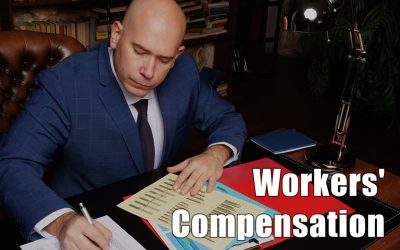As an employee benefit program, workers’ compensation reimburses injured employees for the medical expenses they incur and for lost wages during their injury and recovery period. When determining eligibility for workers’ compensation, medical chart reviews are an important consideration. Before a workers’ compensation claim can be finalized, any existing liens must be identified and attended to. A lien is the legal right an entity has against the property of another.
What are the different types of liens in connection with a workers’ compensation claim?
- Medicare/Medicaid lien: If Medicare or Medicaid paid for the worker’s medical treatments for the injury or illness claimed by the worker in his/her claim petition, such amounts have to be reimbursed to those agencies. An injured worker who is covered by Medicare or Medicaid should not seek treatment on an unauthorized basis, and also not mention the work injury when treating for a non-work related condition. If the worker mentions that he/she has a compensation claim, the doctor may note that injury in his/her chart and the doctor’s staff may list that injury as a code and submit it to Medicare along with the non-work related concerns. This would result in a Medicare/Medicaid lien.
- Private insurer lien: Private health insurers that pay for treatment for a work-related injury also have a lien against the claim. This lien will have to be repaid when the workers’ compensation carrier reimburses the health insurer for its payments.
- Lien attached to a third-party lawsuit: When a worker is injured on the job, workers’ compensation pays him/her for medical expenses or lost wages. If someone other than the employer is responsible for the injuries, the worker may be able to file a third-party lawsuit and get compensated for things workers’ compensation doesn’t pay for such as pain and suffering. If workers’ compensation paid the worker for lost wages or medical treatment, the law allows them “to take a lien” against the third-party lawsuit to reimburse them for a portion of what they paid the worker. The process in which the workers’ compensation insurer claims a right to reimbursement from a third-party, who is also responsible for the worker’s injury, is known as “subrogation.” Typically, workers’ compensation takes a lien only for about two-thirds of what they paid the worker. In case there has been no recovery in the third-party lawsuit, no lien applies and the workers’ compensation claim can be settled.
- State temporary disability lien: State temporary disability liens occur when an injured worker treats with an unauthorized medical doctor, unaware of workers’ compensation treatment laws; or when a claim is denied by the workers’ compensation insurer. Such a lien must be reimbursed at the conclusion of a workers’ compensation case. A workers’ compensation judge may sometimes rule out a state disability lien if he/she finds that the medical condition on which the lien is based is not related to the injured worker’s claim.
- Child support lien: If an injured worker has child support arrears, at the time of settlement or trial in the workers’ compensation case, the judge will sign an order for child support to be deducted from the settlement or trial if the net amount owed to the client after deducting attorney fees and medical report costs are greater than $2000.
- Attorney lien: if the injured worker changes attorneys, the original attorney would assert a lien. Before the case can be finalized, there has to be an attorney fee split arrangement.
Workers’ compensation attorneys provide efficient assistance to their client claimants and ensure that they understand the various types of liens that may be involved. The injured worker’s eligibility for workers’ compensation is determined through medical peer review and other scrutiny. Once the claim is settled or during trial, attorney assistance will prove valuable to claimants in understanding what their benefits actually are after the liens attached are deducted.




